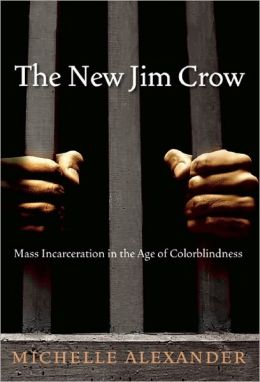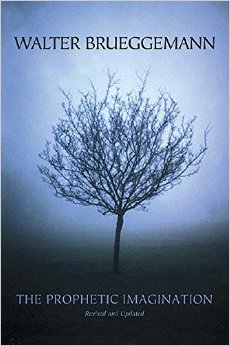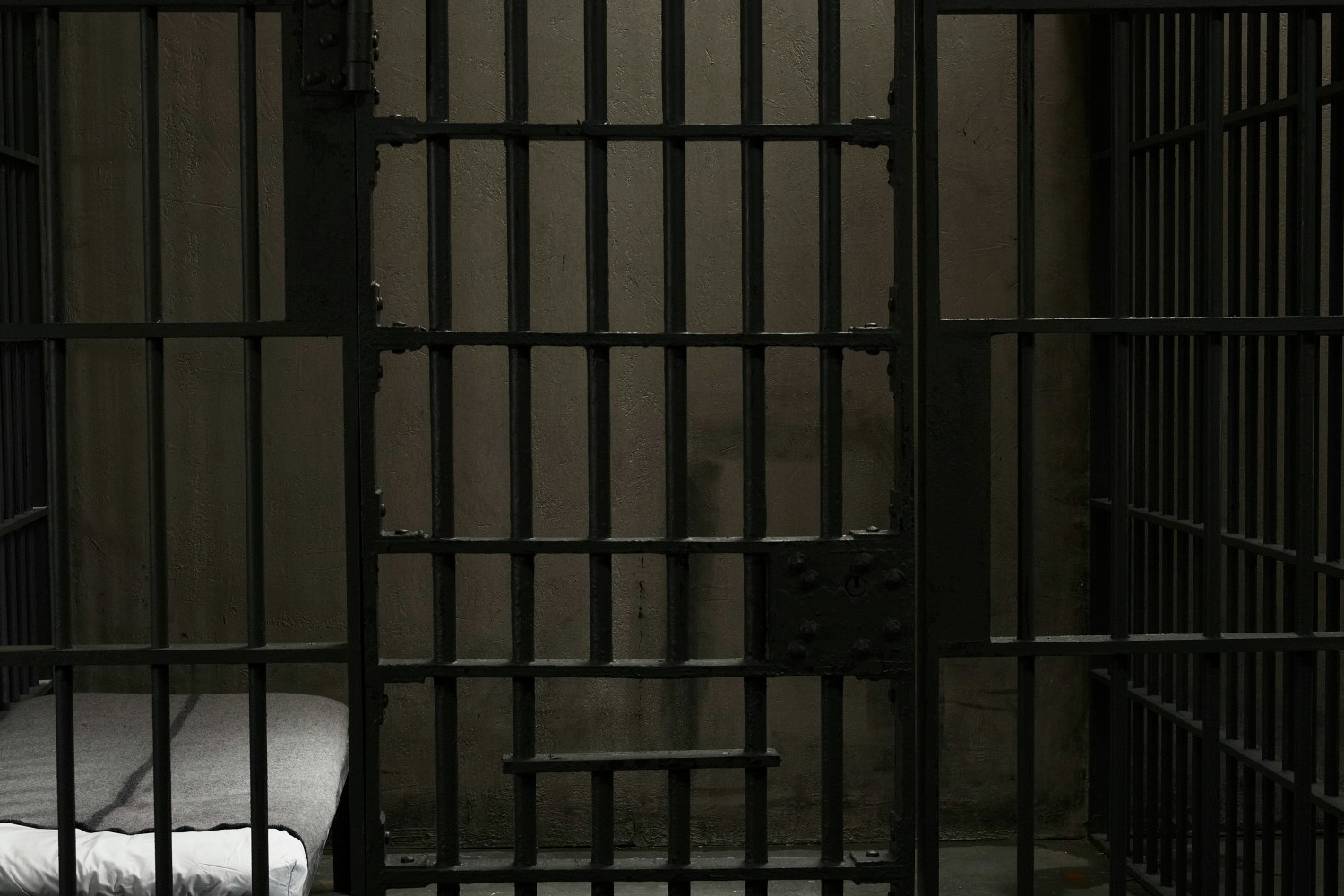Later this month, our graduating Master of Divinity and MA in Theology & Culture students will present their Integrative Projects, the culmination of their work here at The Seattle School. Until then, we’ll be spotlighting a handful of the presenting students as they reflect on their work. Here, Matthew Rock writes about his project, Know Your Enemy: American Incarceration & the Social Imagination of the Deep State.
If I had to point to one moment where my Integrative Project began to plant itself in my brain, I would go back to a single quote from The New Jim Crow: Mass Incarceration in the Age of Colorblindness, by Michelle Alexander. It was the little seed in the soil of my theology and ecclesiology that eventually grew into an idea and then a conviction that consumed the better part of my final year here at school. She writes: “Criminals, it turns out, are the one social group in America we have permission to hate.” I remember instantly feeling a punch to my gut—first asking myself, “How can I reconcile this statement—this truth—with the call of Jesus to love friends, neighbors, strangers, enemies…everybody?” And then, “Who is giving me this permission, and why the hell am I allowing them to be the moral, ethical, and social authority in my life instead of Jesus, the crucified God?”
As people hear about my project, they have naturally asked why I’m interested in this. Good question! In the spirit of full disclosure, I have no personal connection to the US criminal justice system. I’ve never been to prison, I have no family or friends in prison, and I am a white man who has little to no chance of being sentenced to prison (or just shot) simply for my skin color or social location. The only answer I can offer is weirdly reminiscent of a bad exorcism: the power of Christ compels me! There is nothing in my life that directly ties me to the prison industrial complex; but if I am to call myself a Christian, if I am to claim to be a disciple of Jesus, then I cannot in good conscience hide myself from the injustice and suffering of the millions under the control of the American punishment regime. And further, I believe my pastoral vocation demands that I think well not only about the current oppressive system but also what a Christian response should be.
 I read a lot for this project…and yet there is so much more reading an adequate response really needs—probably a hundred-fold more. But some key works were The New Jim Crow (of course), Michael Walzer’s Exodus and Revolution, Daniel Berrigan’s The Kings and their Gods, René Girard’s work on scapegoats, James Cone’s The Cross and the Lynching Tree, Brueggemann’s The Prophetic Imagination, Mike Lofgren’s article “Anatomy of the Deep State,” and most importantly William Cavanaugh’s Torture and Eucharist: Theology, Politics, and the Body of Christ.
I read a lot for this project…and yet there is so much more reading an adequate response really needs—probably a hundred-fold more. But some key works were The New Jim Crow (of course), Michael Walzer’s Exodus and Revolution, Daniel Berrigan’s The Kings and their Gods, René Girard’s work on scapegoats, James Cone’s The Cross and the Lynching Tree, Brueggemann’s The Prophetic Imagination, Mike Lofgren’s article “Anatomy of the Deep State,” and most importantly William Cavanaugh’s Torture and Eucharist: Theology, Politics, and the Body of Christ.
Oh and I listened to a whole bunch of Rage Against The Machine.
Alexander’s The New Jim Crow is only the most well-known of a growing body of work denouncing the U.S. criminal justice system and its structural racism. There are many writers doing this, and they expose the dehumanizing injustice at the heart of this system, yet in my opinion lasting change remains a slim chance. And so I had to ask… Why? Here is where the big turn in my thinking came, where I really found some energy and hope in what the discipleship of Christ can offer. It has to do with what we can call “the social imagination.”
The social imagination is a society’s sense of what is and is not real, including the memory of how the society got where it is as well as hopes for the future. It is, ultimately, the reality we perceive ourselves living in and the options we believe we have. This project of mine argues that the American Deep State—what Lofgren defines as “a hybrid association of elements of government and parts of top-level finance and industry that is effectively able to govern the United States without reference to the consent of the governed as expressed through the formal political process”—has manufactured an imagination in which we depend utterly on the State for what it has deemed our primary need: security. One significant node of this security apparatus is the prison industrial complex. The Deep State, I believe, has weaponized the criminal justice system in order to achieve its goal of immortality; as Berrigan writes, “As the pharaoh and other despots are aware, there are three ways of gaining admission to the sun boat and its voyage to immortality: wars won, territory expanded, and grand edifices erected.” Immortality is the primary goal of State power. It is a theological term that I believe helps us understand that we cannot simply conceive of political structures in civic or material terms. The political realm—particularly the State—is fundamentally a part of our social imagination, and in the language of Cavanaugh, theology is not just words about God but also “the mobilization of the human social imagination.”
Thus, incarceration functions as a means of the state achieving divinization because it supports the larger imaginative project of national security. State regimes, in order to justify their existence and legitimize their violence, create the very enemies from which they then protect their citizens. Using James Alison’s understanding of René Girard’s mimetic theory, I argue that the State punishes scapegoats by driving them into penitentiaries where they are stripped of their identities and scripted as enemies in the performance of the state imagination. Upon their return to society, they are dehumanized and renamed Felons, and the cycle continues.
 Because the power of the Deep State lies in the power of its imagination, only another imagination can bring about real transformation. Without a transformed or redeemed imagination, all attempts at reform (legislative or otherwise) will fall flat. For the Church, this alternative is the Eucharist, which is itself a recontextualization of the Exodus memory. The Exodus is a paradigmatic narrative upon which a great deal of Jewish and Christian meaning is based, and it offers us a way to imagine our world and power structures that counters Deep State hegemony and immortality. The final section of this project contends that by bearing witness to Exodus and the cross, we live within a Christian imagination formidable enough to disrupt the carceral imagination. It is an imagination, however, that is cruciform; that is, it takes the form of and imitates Jesus’ obedience to God—an obedience which the powers could not abide. “The cross,” Brueggemann notes, “is the assurance that effective prophetic criticism is done not by an outsider but always by one who must embrace the grief, enter into the death, and know the pain of the criticized one.”
Because the power of the Deep State lies in the power of its imagination, only another imagination can bring about real transformation. Without a transformed or redeemed imagination, all attempts at reform (legislative or otherwise) will fall flat. For the Church, this alternative is the Eucharist, which is itself a recontextualization of the Exodus memory. The Exodus is a paradigmatic narrative upon which a great deal of Jewish and Christian meaning is based, and it offers us a way to imagine our world and power structures that counters Deep State hegemony and immortality. The final section of this project contends that by bearing witness to Exodus and the cross, we live within a Christian imagination formidable enough to disrupt the carceral imagination. It is an imagination, however, that is cruciform; that is, it takes the form of and imitates Jesus’ obedience to God—an obedience which the powers could not abide. “The cross,” Brueggemann notes, “is the assurance that effective prophetic criticism is done not by an outsider but always by one who must embrace the grief, enter into the death, and know the pain of the criticized one.”
The page limitations of this project, as well as the fact that this was a one-year master’s project and not a multi-year doctoral dissertation, meant that I was unable to spend much time thinking well on how this alternative imagination is lived out in practical, concrete ways. Cavanaugh offers multiple real examples, but they take place in a radically different context. I feel I have merely opened the door; the journey that follows is arguably much more difficult. But… opening the door is a start.
If you’re intrigued by what you read, we invite you to join us for this year’s presentations, 3-6 p.m. on June 20 and 1-5 p.m. on June 25.

